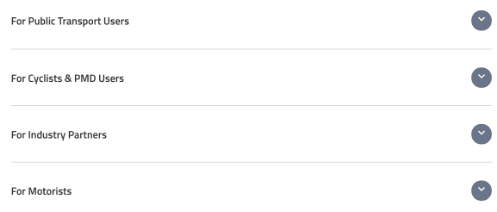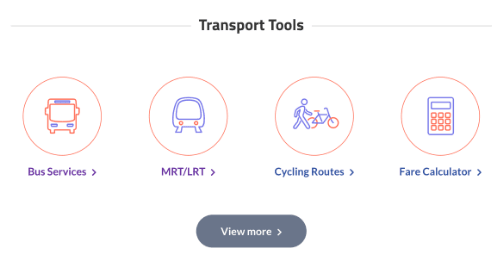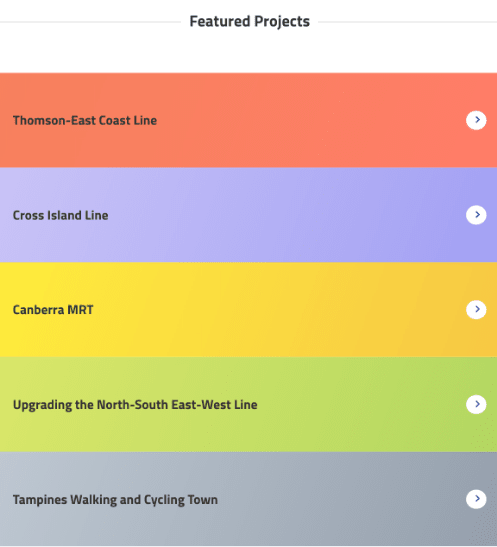New Commercial Vehicle Emissions Scheme and Enhanced Early Turnover Scheme to kick in on 1 April 2021
The National Environment Agency (NEA) and the Land Transport Authority (LTA) will introduce the Commercial Vehicle Emissions Scheme (CVES) for all new and used[1] imported Light Goods Vehicles (LGVs), Goods-cum-Passenger Vehicles (GPVs), and small buses, all with maximum laden weight (MLW) not exceeding 3,500kg. The Early Turnover Scheme (ETS) for existing Category C (Cat C) commercial vehicles will also be enhanced. Both schemes will take effect from 1 April 2021 until 31 March 2023. These schemes were announced at the Ministry of the Environment and Water Resources 2020 Committee of Supply Debate.
Singapore’s Multi-pronged Approach to Ensuring Good Air Quality
2 Air pollution is a key threat to public health in many cities. According to the World Health Organization (WHO), air pollution is the biggest environmental health risk, killing 7 million people across the globe every year.
3 Over the years, various initiatives have been introduced to reduce vehicular emissions, which is a key source of air pollutants such as Ozone and Particulate Matter (PM). These initiatives include the introduction of Euro 6 emission standards, the Vehicular Emissions Scheme (VES) for cars and taxis, the ETS for existing Cat C commercial vehicles and the tightening of in-use emission standards. Singapore is working towards meeting the air quality targets for these pollutants (refer to Annex A for 2019 air quality performance).
4 In Singapore, diesel commercial vehicles and buses are key local emission sources of particulate matter (PM) and nitrogen oxides[2] (NOx). With the new CVES and enhanced ETS, the Government aims to promote the adoption of cleaner, newer LGVs and encourage the early turnover of older, more polluting commercial vehicles.
Commercial Vehicle Emissions Scheme (CVES)
5 Under the CVES, LGVs are classified into Bands A, B or C by their worst-performing pollutant among the following: carbon dioxide (CO2), carbon monoxide (CO), hydrocarbons (HC), NOx and PM. This is to encourage buyers to choose models that have lower emissions across all criteria and are cleaner overall, thus addressing climate change, improving ambient air quality and protecting public health[3].
6 The details of the three CVES bands are shown in the following table:
Table 1: CVES Bands for LGVs |
||||||
Band |
Pollutants |
Incentive / Surcharge (+/-) |
||||
CO2 (g/km) |
HC (g/km) |
CO (g/km) |
NOx(g/km) | PM(mg/km) | ||
A |
£150 |
=0.0 |
=0.0 |
=0.0 |
=0.0 |
+$30,000 |
B |
150< B £280 |
0.0< B £0.039 |
0.0< B £0.270 |
0.0< B £0.008 |
0.0< B £0.9 |
+$10,000 |
C |
>280 |
>0.039 |
>0.270 |
>0.008 |
>0.9 |
-$10,000 |
7 For Band A vehicles, the $30,000 incentive will be disbursed annually in equal payments to the prevailing vehicle owner over three years (i.e. $10,000 a year). For Band B vehicles, the owner will receive an upfront $10,000 incentive upon vehicle registration. For Band C vehicles, a $10,000 surcharge will be imposed, likewise upon vehicle registration.
8 To account for the CO2 emissions produced by electricity generation from fossil fuels, an emission factor of 0.4g CO2/Wh will be applied to the electricity consumption of electric vehicles (EVs) as measured under the United Nations Economic Commission for Europe (UNECE) Regulation No.101 test procedures.
Enhanced Early Turnover Scheme (ETS)
9 The ETS was first implemented in 2013 to encourage the early turnover of Pre-Euro and Euro 1 Cat C diesel vehicles to newer and cleaner models. In 2015, the ETS was extended to Euro 2 and 3 Cat C diesel vehicles, with an additional incentive for turnover to Euro 6 (or equivalent) models. As of 31 December 2019, about 47,000 pollutive vehicles have been replaced early under the scheme.
10 From 1 April 2021 onwards, existing Euro 4 Cat C diesel vehicles will also be eligible for the ETS incentive. This will more than double the number of ETS-eligible vehicles from around 22,000 to more than 63,000. Existing Euro 2/3/4 Cat C diesel vehicle owners will receive both the ETS and CVES incentives if they replace their vehicles with a Euro 6 (or equivalent) LGV classified in Band A or B of the CVES. To encourage the turnover to cleaner alternatives, owners who replace an existing Euro 2/3/4 Cat C diesel vehicle with a Band C LGV (i.e. diesel LGV) will not qualify for the ETS incentive. Owners of HGVs can enjoy the highest incentives if they turn over their existing Cat C diesel vehicle to an HGV that has zero tailpipe emissions. Tailpipe emissions refer to air pollutants HC, CO, NOx and PM.
11 A table summarising the key changes to the ETS can be found below:
Table 2: Summary of ETS Incentives* |
||||
Existing Vehicle and Emission Standard |
Replacement Vehicle (Euro 6 or equivalent) |
Incentive (COE Bonus) |
||
Current ETS (till 31 Mar 2021) |
Enhanced ETS (from 1 Apr 2021) |
|||
LGV |
Euro 2/3 |
Band C under CVES |
35% |
N/A |
Band A/B under CVES |
35% |
45%[4] |
||
Euro 4 |
Band C under CVES |
N/A |
N/A |
|
Band A/B under CVES |
N/A |
20%[4] |
||
HGV |
Euro 2/3 |
Vehicle w/ tailpipe emissions |
100% |
80%[5] |
Vehicle w/o tailpipe emissions |
100% |
100% |
||
Euro 4 |
Vehicle w/ tailpipe emissions |
N/A |
40%[5] |
|
Vehicle w/o tailpipe emissions |
N/A |
80% |
||
*Refer to Annex B-D for the eligibility criteria, incentive calculations and sample calculations |
||||
12 The current ETS will be extended from 1 August 2020 to 31 March 2021, before the enhanced ETS and CVES kick in on 1 April 2021.
Spurring the Adoption of Cleaner Vehicles
13 The Government aims to make the adoption of cleaner commercial vehicles more attractive with the CVES and enhanced ETS, and other initiatives to encourage the use of electric vehicles (EV) such as the EV Early Adoption Incentive (EEAI). These efforts will go towards improving Singapore’s air quality and meeting our pledge to reduce our emissions intensity under the Paris Agreement.
14 NEA and LTA will be engaging the industry in the coming weeks to brief them on the CVES and enhanced ETS.
Annex A: Singapore Air Quality Targets
Annex B: Eligibility Criteria and Details for the Enhanced Early Turnover Scheme
Annex C: Summary on PQP Payable and Calculation of COE
Annex D: Benefitting from the CVES and Enhanced ETS















